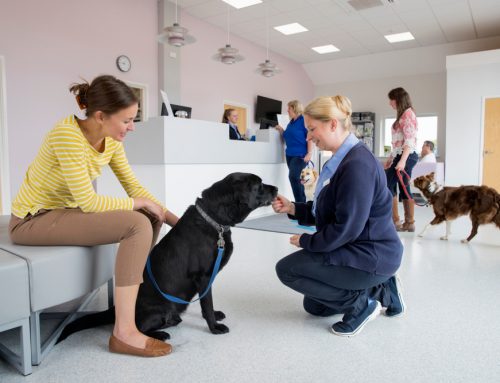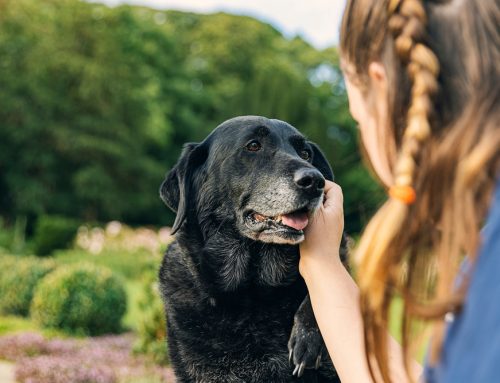If your pet’s breath is less than fresh, they may be due for a professional veterinary dental cleaning. This procedure is a crucial step toward keeping your pet happy and healthy. Our Bolton Veterinary Hospital team highlights six things you should know about a professional veterinary dental cleaning.
#1: A professional veterinary dental cleaning is important for your pet’s overall health
Imagine how disgusting your mouth would be if you never brushed your teeth. Plaque and tartar build up on your pet’s teeth the same way as in your mouth. Plaque is composed of bacteria and food particles and, if not removed, the plaque hardens to form tartar. In addition, the bacteria can invade below your pet’s gum line, causing inflammation and damage to the structures that support your pet’s teeth. Issues this bacterial invasion cause include:
- Bad breath — You may think bad breath is normal for your pet, but that foul odor is caused by decomposing food and the bacteria colonizing your pet’s mouth.
- Oral pain — Periodontal disease can cause significant, painful inflammation in your pet’s mouth. You may notice red, swollen gums, which may bleed if their condition is advanced.
- Tooth loss — As the bacteria breaks down the structures supporting your pet’s teeth, the tooth can become unattached, leading to tooth loss. Losing teeth can be painful for your pet, and can make eating difficult.
- Fractured jaw — In advanced stages, the invading bacteria can cause severe bone loss, which can lead to jaw fractures in cats and toy-breed dogs.
- Organ damage — Bacteria can also enter your pet’s bloodstream, spreading to their heart, liver, and kidneys. Damage to these organs can cause significant health issues for your pet.
#2: A professional veterinary dental cleaning requires general anesthesia
Sharp instruments in their mouth scraping their teeth can be upsetting and stressful for your pet, not to mention dangerous, if they don’t keep still. Additionally, it is imperative that dental scaling include cleaning under the gumline. Your pet will need anesthesia to allow our veterinary professionals to properly perform the dental cleaning properly, safely and stress-free for your pet. Their wellbeing is our utmost priority, and we take great pains to closely monitor their vitals throughout the procedure, and as they recover.
#3: X-rays are necessary to perform an adequate professional veterinary dental cleaning
Dental X-rays are needed to properly evaluate your pet’s teeth and their supporting structures. Periodontal disease can cause bone loss, and this deterioration cannot be appreciated by an oral exam alone. Dental X-rays can also identify tooth root abscesses, fractured teeth, dead teeth, and jaw fractures.
#4: A professional veterinary dental cleaning is a thorough process
Once your pet is safely under general anesthesia and their dental X-rays have been evaluated, an oral exam will be performed to assess for loose teeth, deep gingival pocketing, or any other abnormalities. Numbing medications, which can be effective for up to eight hours, may be used to decrease the amount of general anesthetic your pet needs, and to allow them to recover in comfort.
Once abnormal issues are addressed, a dental scaler will be used to remove all plaque and tartar from your pet’s mouth, including bacterial deposits underneath the gum line. Their teeth will then be polished to smooth the tooth’s surface, to hinder bacteria from accumulating on the rough exterior. When the procedure is finished, your pet will be taken to a quiet, warm place to recover.
#5: Your pet may be sent home on medication
If your pet has significant periodontal disease, they may need antibiotics, and potentially pain medications, for a period of time after their dental procedure. In addition, if your pet has a known heart condition, they may be placed on antibiotics before and after their procedure.
#6: Home dental care is an important supplement to a professional veterinary dental cleaning

You wouldn’t expect your mouth to stay minty fresh if you didn’t brush your teeth between visits to the dentist, and your pet’s mouth won’t stay clean if their oral hygiene isn’t addressed between professional veterinary dental cleanings. Steps you can take to keep your pet’s mouth healthy between cleanings include:
- Teethbrushing — Yes, you can brush your pet’s teeth, but you will need to gradually introduce them to toothbrushing, to help them accept the procedure. You will also need to use a specifically designed pet toothpaste, since human toothpaste can be toxic for pets. Also, ensure you use a small, soft-bristled toothbrush, so you don’t aggravate their gums.
- Dental chews — Most pets enjoy chewing on treats, which can remove plaque and tartar from their teeth. Look for products approved by the Veterinary Oral Health Council (VOHC), and don’t let your pet chew on exceptionally hard products, such as antlers, hooves, and bones.
- Dental diets — Dental diets with kibble specially designed to scrub your pet’s teeth while they chew are available. In addition, some diets include additives that prevent plaque from hardening into tartar. Consult our veterinary professionals for the appropriate diet for your pet.
Bolton Veterinary Hospital is your partner in the fight against dental disease in your furry companion. Contact us today with any questions about your pet’s dental health, or to schedule their professional veterinary dental cleaning.







Leave A Comment